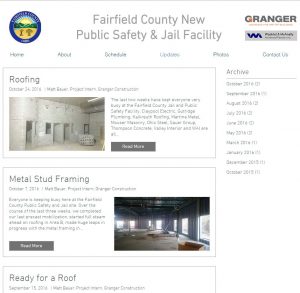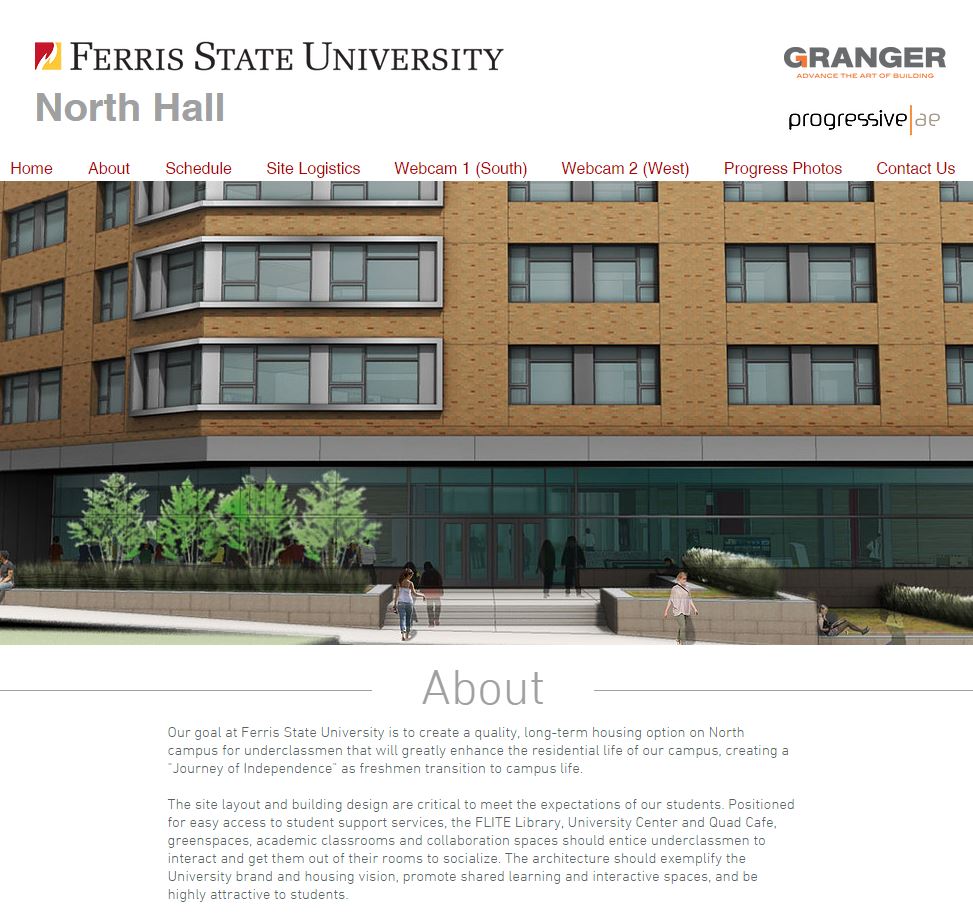Granger projects highlight efficient, online communication
Today’s construction projects, especially those that are financed with public dollars or those of great interest to communities, require a greater level of transparency than ever before. As a project manager or Owner, how do you keep your customers and constituents in the know throughout the course of a project? How do you reassure the public that their dollars are being spent wisely and invested properly in a particular project and effectively communicate milestones, progress and deadlines?
Historically, Owners and construction managers have exchanged mountains of paperwork, full of facts and figures, to communicate project progress. This paperwork, while thorough and exhaustive, has often proven to be a burden to effective communication with subcontractors, end-users and constituents.
In recent years, Granger Construction has embraced the usage of project-specific websites to promote and more effectively communicate project details. These websites often contain project-specific information about important dates, deadlines and milestones, progress and safety updates, and live, on-site video cameras so any visitor can witness construction happening in real-time. Site information is updated regularly by an individual on the project team and the URL is distributed widely to the Owner, subcontractors and other interested parties.
Project-specific websites can be customized to the needs and wishes of the project Owner and are built to be mobile-friendly to increase access and usage and ensure effective communication across devices and platforms.
Granger’s work on Ferris State University’s North Hall residence hall project in Big Rapids, Mich. is one such project utilizing a project-specific website. Brad Hesche, senior project manager at the FSU site, recalled how the Owner requested the use of a public-facing website in order to have a common source of information to direct people toward when questions arise.
Since its launch, the Owner has noted how the site has reduced time spent re-explaining or following up with students, staff and subcontractors on requested information. The content on the site features updated project photos from the Granger team, a project schedule and preliminary logistics plan as well as an live feed webcam so viewers can access real-time construction progress.
Another Granger project utilizing a custom-built website is the Fairfield County Public Safety and Jail Facility project in Lancaster, Ohio.
According to Rob Train, vice president and project director, the Owner requested a website as a way to inform and provide transparency to the public since the facility is being funded by tax dollars. Not only can the public benefit from the information on the site, but it has also proven to be a great place to direct potential bidders for succinct and up-to-date information. The Fairfield County website features links to both the construction manager and architect/engineer websites, as well as a blog updated every two weeks with construction progress.
While a project-specific website may not be necessary for every project, they have proven to be a valuable communication tool, particularly on projects in the public sector or higher education market segments which often require a higher degree of transparency for constituents and taxpayers.




That’s interesting that thermal imaging uses infrared detectors to create pictures made of heat exposure. I bet that can help you see things that light can have remain hidden. Different energies can reveal different things.
I thought it was really cool to learn that thermal cameras can easily identify things such as moisture in a structure. Like the article states, this allows for times fixes and can reduce unplanned expenses. I personally think having a thermal camera would be invaluable if I were a contractor making repairs to a home.